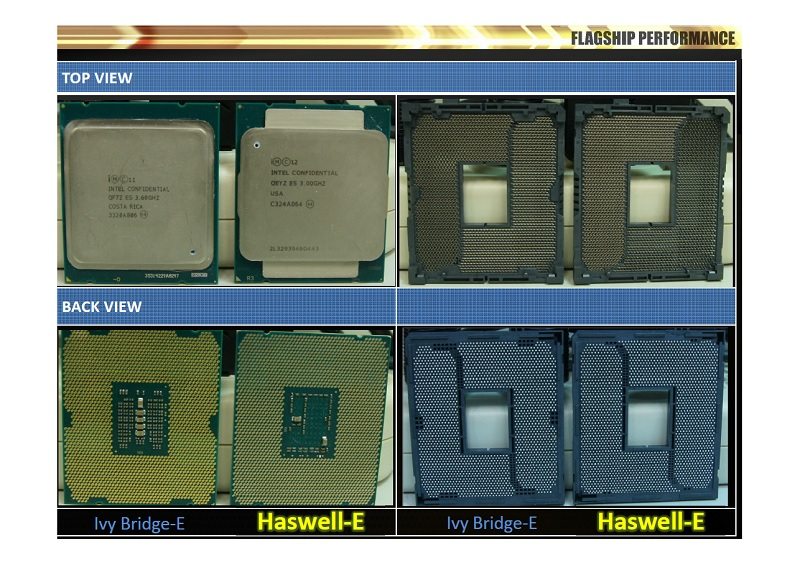ASUS X99 Motherboard Launch Coverage
Ryan Martin / 10 years ago
ASUS OC Socket – Getting Technical
We’ve already mentioned the ASUS OC Socket a few times…but what is it? Well even ASUS themselves were a bit unsure as to what they were doing with the OC Socket. The basic logic behind the OC Socket is that the default LGA 2011-3 socket has quite a few pins missing, so OC socket puts these pins back. Why do these pins need to be put back? Well ASUS claims that some of the missing pins actually hold key functions that enhance overclocking potential for the CPU and DRAM. They are not 100% sure about what each and every pin does, but they known that from their laboratory testing that blanked off pins do have functions. Intel themselves have apparently been unwilling to discuss what each and every pin does and why some of them have been removed.
The layout of the pins is crucial because as we know, Haswell-E implements the same VRM control design as Haswell. This means that the previous voltage controls that were done by the motherboard are now done on the CPU with on-die VRM, this is why there is “less” on the back of the Haswell-E CPU than the Ivy Bridge-E CPU. By putting these pins back ASUS claims to have regained control of some of those features lost by the on-die VRM, as a result you can tweak more voltages and OC better with the ASUS OC Socket than the standard LGA 2011-3 socket that other vendors are using. ASUS also told us they hold a patent of this CPU socket design, this patent lasts 6 months so at launch you’ll only be able to buy motherboards with this socket type from ASUS.

Okay so we’ve heard what ASUS claim, but how does it work in practice. Well firstly, the extra pins provide more voltage stability – particularly under extreme overclocking. ASUS claim that the OC socket allows for stable voltages, their example shows two systems with identical CPUs. In the OC socket system the voltage holds at 1.825v, in the other system with the standard socket it droops to 1.728. Of course, those results might be very different with realistic voltages people might actually use, say 1.5 volts.
Another interesting thing is that ASUS claims their OC socket allows higher memory overclocks, and at lower voltages. Ultimately this means better performance, so clearly these pins that ASUS have reinstated do serve a purpose in terms of system stability and voltage delivery. In summary then the OC socket is actually a pretty ground-breaking idea, modifying the Intel socket to improve performance during overclocking. In my opinion it appears that ASUS are giving Intel the middle finger. ASUS are doing something other vendors dare not do, and play around with the standard Intel CPU socket design to eek out extra performance that Intel have closed off, for whatever reasons. We aren’t sure whether ASUS and Intel cooperated over the OC socket, certainly the impression ASUS R&D gave us at the event was that Intel was none the wiser. It will be interesting to see how all this develops. I think it is worth mentioning that at stock speeds performance of the ASUS OC socket vs the standard LGA 2011-3 socket is identical, the ASUS OC socket allows for better overclocks (as the name suggests) and more advanced voltage controls (which go beyond Intel spec).
In summary then the OC socket is actually a pretty ground-breaking idea, modifying the Intel socket to improve performance during overclocking. In my opinion it appears that ASUS are giving Intel the middle finger. ASUS are doing something other vendors dare not do, and play around with the standard Intel CPU socket design to eek out extra performance that Intel have closed off, for whatever reasons. We aren’t sure whether ASUS and Intel cooperated over the OC socket, certainly the impression ASUS R&D gave us at the event was that Intel was none the wiser. It will be interesting to see how all this develops. I think it is worth mentioning that at stock speeds performance of the ASUS OC socket vs the standard LGA 2011-3 socket is identical, the ASUS OC socket allows for better overclocks (as the name suggests) and more advanced voltage controls (which go beyond Intel spec).



















